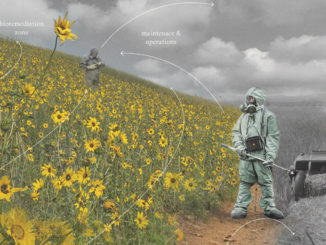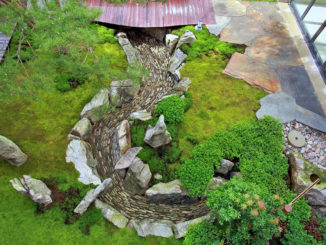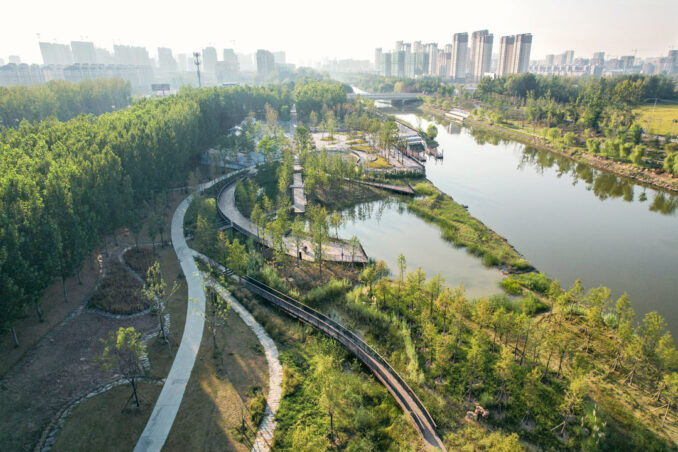
The 9.8-kilometer Fengpei Canal, located in Xuzhou City, Jiangsu Province, is one of the important tributaries of the Nansi Lake, the largest freshwater lake in northern China. Nansi Lake is a vital transportation hub for the Beijing-Hangzhou Grand Canal and an essential junction for the South-to-North Water Diversion Project’s eastern route. The Fengpei Canal runs through Pei County, serving as a crucial flood control, drainage, and irrigation channel. It has a high annual water level fluctuation frequency, resulting in poor vegetation growth and severe soil erosion. The riverside natural forest has a limited variety of vegetation and low ecological carrying capacity. The flood-control dike has caused a predicament of separation between people and water.
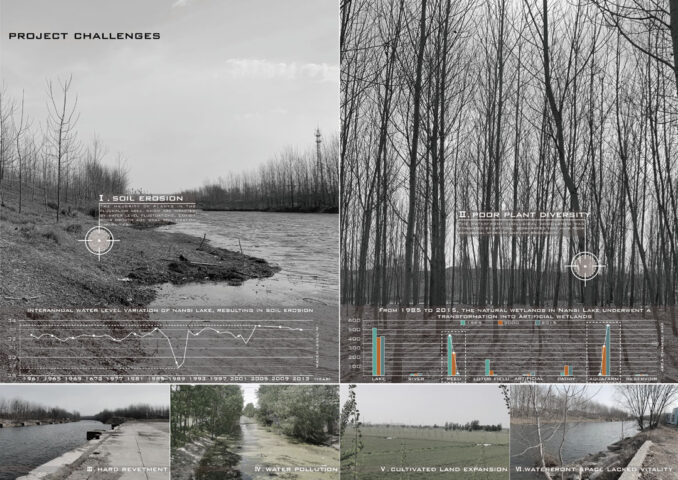
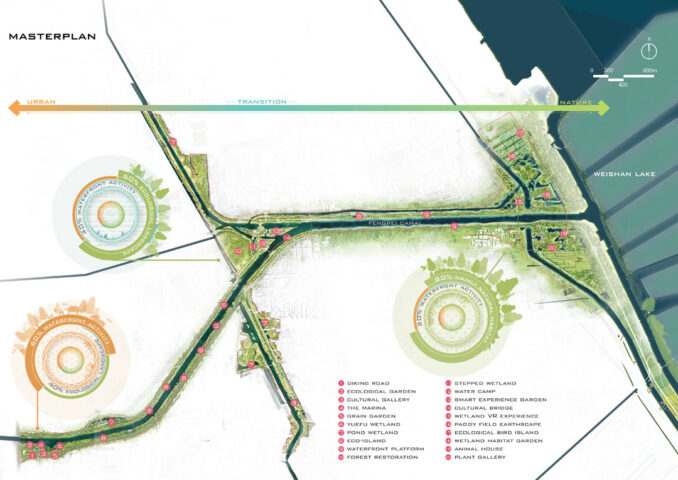
Ecological Restoration Strategies
Considering the intricate site constraints and the recreational requirements of urban residents, the design team proposed low-impact, low-intervention strategies for improving water quality and restoring ecology. The ecological engineering hierarchy of water, banks, riparian zones, and dikes have been methodically analyzed, and Nature-based Solutions have been incorporated into the project. Eight types of purification wetlands have been created, including surface runoff wetlands, agricultural returning water wetlands, and enhanced purifying wetlands, as well as four types of ecological buffer zones, such as dike-side gentle slopes, dike-side compound, arbor-shrub, and herbaceous types. This formed a “surface + point” restoration system.
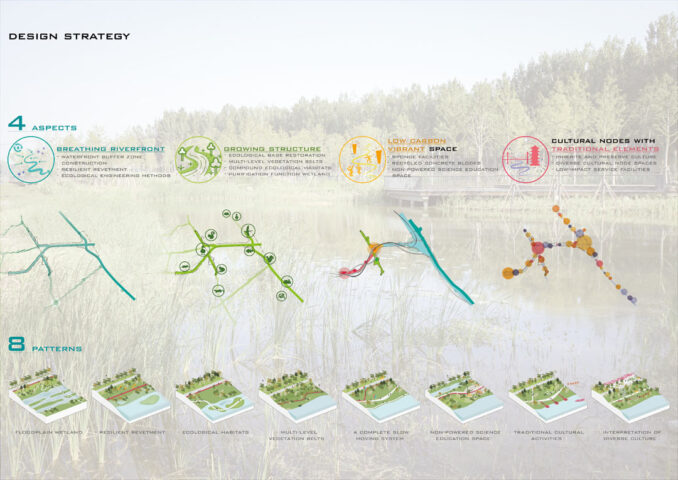
Breathing Riverfront
The water level fluctuation during the abundant water period of the Fengpei Canal is about 1.1 meters, about 0.32 meters during the flood season, and about 5.2 meters during the flood period. Considering the submergence frequency and water level fluctuations, the design team adopted seven ecological engineering methods between the low water level and the 10-year flood level: wooden pile revetments, natural vegetation bank protection, multi-level aquatic plant bank protection, three-dimensional vegetation net grass bank protection, plant cutting bank protection, dormant cutting bank protection, and gabion revetments. This created a resilient waterfront, improved erosion resistance, solved soil erosion problems, and formed a natural ecological revetment. When designing for high water levels, plants and supporting facilities are floodable. When designing for low water levels, the exposed ecological engineering structures can serve landscape and science education purposes. To ensure the growth of submerged plants, retention ponds were strategically developed below the design normal water level to maintain appropriate water depths.
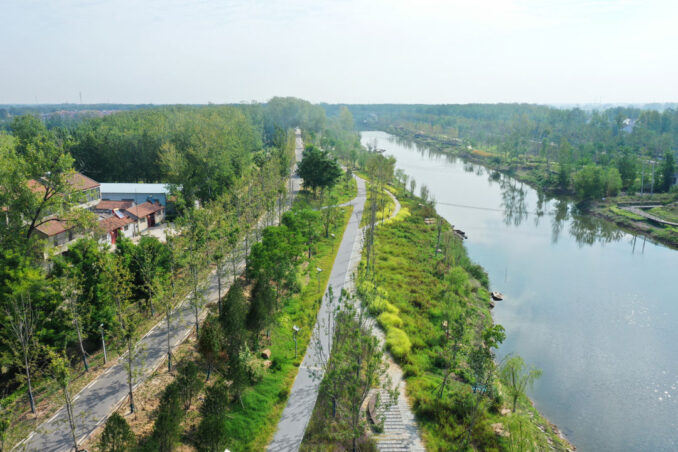
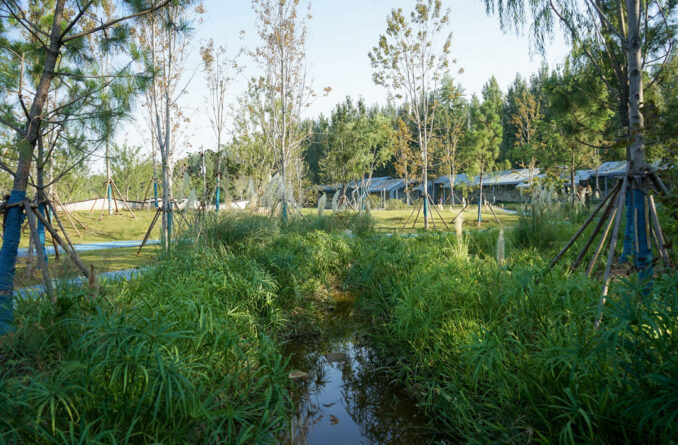
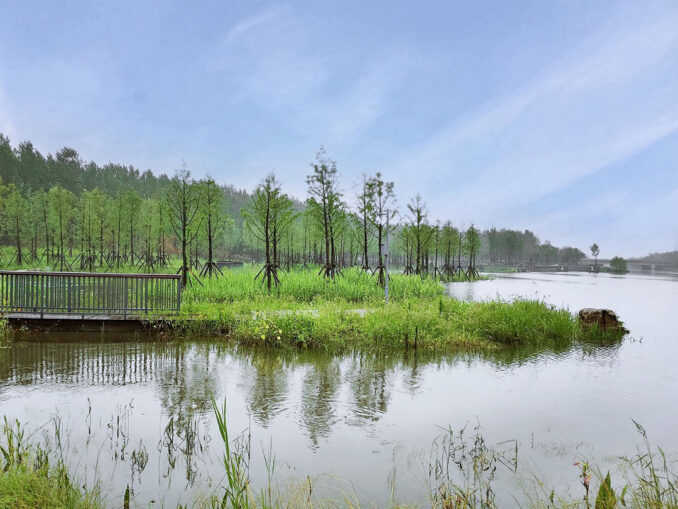
Growing Structure
The design team took a comprehensive approach to the “water body-riverbank-riparian zone-levee” river structure, considering both water conservancy flood control and ecological functions. Using natural plant configuration techniques, the team implemented multi-level vegetation belts, alleviating the risk of surface runoff erosion on the embankment and purifying water pollution. The increase in vegetation has attracted pollinators and facilitated genetic exchange, ultimately enhancing the ecosystem’s biodiversity. Additionally, constructing shallow water area landforms has enriched the microenvironment heterogeneity, increasing aquatic biodiversity.
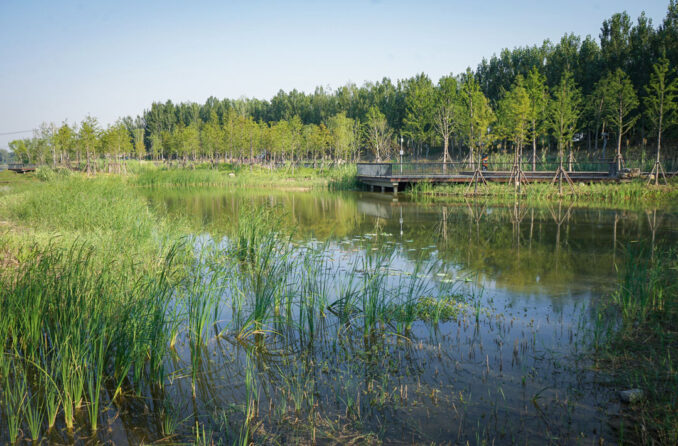
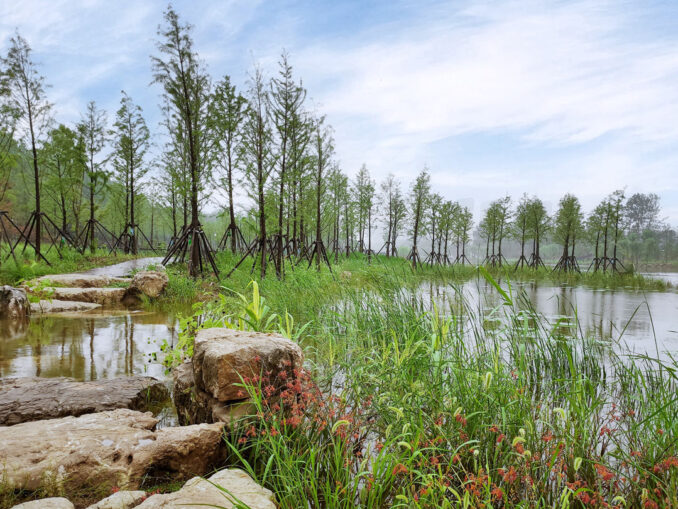
Low-carbon Vibrant Space
To mitigate potential pollution caused by human activities and surface runoff, micro-topography has been designed to collect initial rainwater in concave green spaces, dry creeks, and other sponge facilities. The wetlands then purify the collected water before flowing into the Fengpei Canal, reducing the risk of contamination. The project also prioritized low-carbon concepts and material recycling. Concrete blocks recycled from the demolition of hard-paved squares were used as materials for gentle slope stone beaches, while damaged paving materials like volcanic rocks were recycled into benches and other facilities. Meanwhile, the trimmed branches from the pruning of plants were used for on-site cuttings with ecological engineering methods, reducing the costs and carbon emissions generated during waste transportation. The eco-material built non-powered science education space has enhanced site vitality and radiated to the surrounding neighborhood.
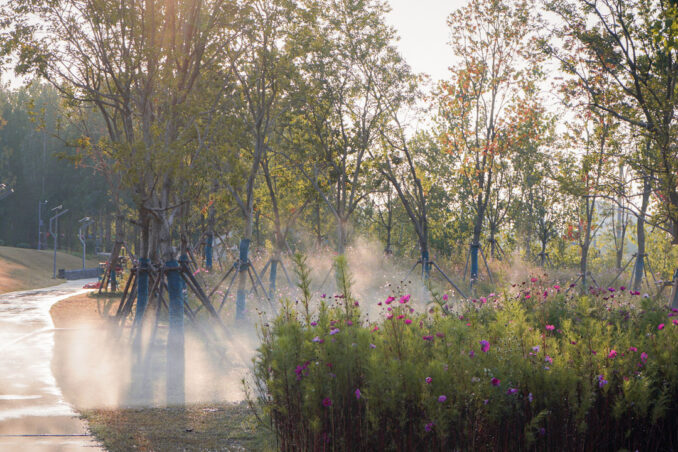
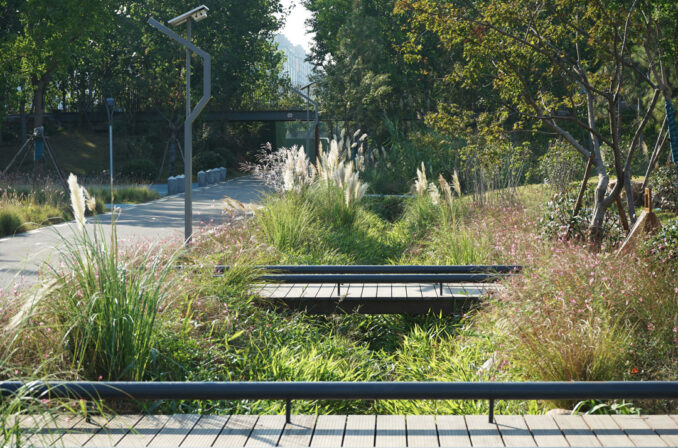
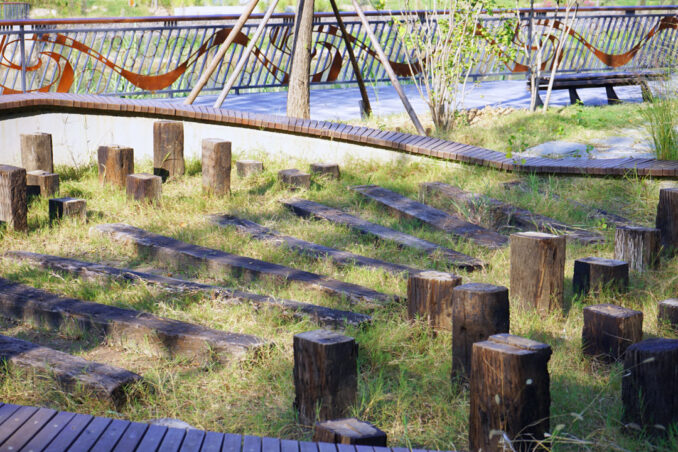
Cultural Nodes with Traditional Elements
Cultural Nodes with Traditional Elements: Diverse cultural node spaces and low-impact service facilities achieve a coupling and prosperity of cultural heritage and green, healthy ecological systems.
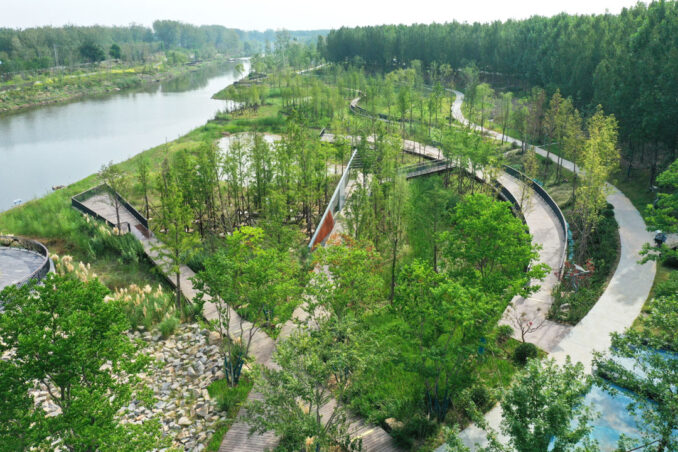
Social Impact
To restore and improve the Fengpei Canal, experts considered ecological issues and risks. The restoration used low-impact and low-intervention solutions. Human intervention was strictly controlled. Additionally, blue-green infrastructure was constructed to create a resilient, safe, vibrant, and healthy environment, enhancing the natural and cultural context and as an ecological corridor. Here, ecological restoration takes on new connotations, improving the living environment and providing public activity spaces for leisure and living for surrounding residents while showcasing historical and cultural features and scientific and innovative displays. The transformation of Fengpei Canal from risk to resilience provides a replicable and promotable demonstration and practical experience for the sustainable development of the Grand Canal cultural belt.
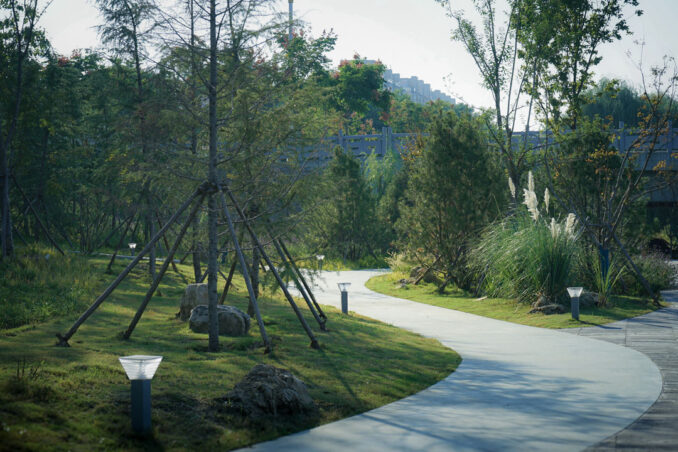
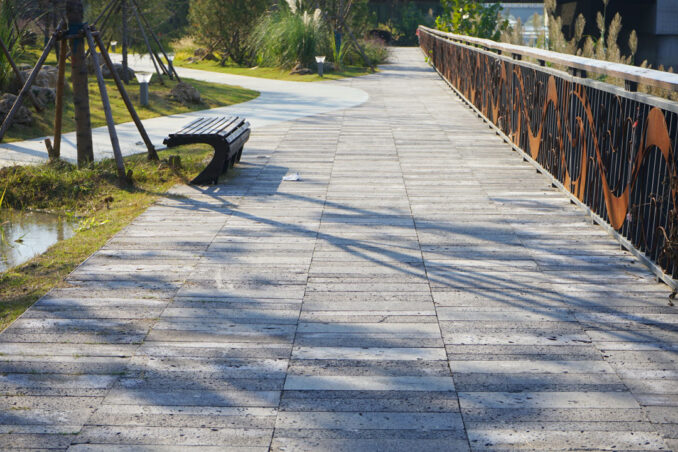
From Risk to Resilience: Fengpei Canal Flood and Water Low-Intervention Management
Location: Pei County, Xuzhou, Jiangsu, China
Landscape Architect: ZEHO ECO
Lead Designer: Chengliang Zhang, Zhe Cao, Yijun Zhang, Baojun Li
Landscape team: Stephen fairhurst, Shihua Liu, Shan Liang, Zhiling Guan, Shuang He, Xiangjun Chen, Yongchen Yang, Kun Du, Jianhua Zhao, Zhouquan Zeng, Jiajia Tan
Ecological team: Sha Zhu, Zhen Pei, Yanxi Chen, Ran Zhu, Jinwei Zhu, Yanchen Zhang, Wei Shao, Qiming Liang
Project Planning Team: Zheng Gu, Lu Luo, Lin Kong
Planning Team: Zhaocong Wang, Xiaoxiao Han, Shuyi Wang
Construction Documentation Team: Chengtao Shen, Guilong Jin, Hongzhou Zeng, Lihai Wu, Gen Li, Ling Wu, Pingping Zeng
Client: Peixian Xingtian Construction Investment Development Group Co., Ltd
Image Credits: ZEHO ECO


